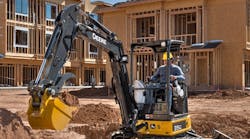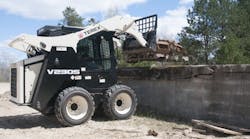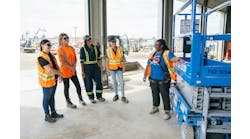Seasonally adjusted construction employment rose in 39 states from May 2015 to May 2016 and declined in 11 states and the District of Columbia, an AGC analysis of Bureau of Labor Statistics data released last week showed. California again added the most jobs (39,600, 5.5 percent), followed by Florida (29,400, 6.9 percent) and Georgia (13,400, 8.1 percent).
The highest percentage gains again occurred in Hawaii (20 percent, 6,700 jobs), Iowa (13 percent, 10,400) and Nevada (10 percent, 6,900). North Dakota again lost the highest percentage of construction jobs, followed by West Virginia (-8.0 percent, -2,700), Kansas (-5.6 percent, -3,400), Wyoming (-5.2 percent, -1,200) and Alaska (-5.0 percent, -900). North Dakota also led again in number of jobs lost, followed by Kansas, Pennsylvania (-2,900, -1.2 percent) and West Virginia.
From April to May, seasonally adjusted construction employment increased in 19 states, shrank in 30 states and D.C., and was unchanged in Indiana. (AGC's rankings are based on seasonally adjusted data, which is available only for construction, mining and logging combined in D.C., Hawaii, and five other states.)
The value of nonresidential construction starts, not seasonally adjusted, increased 16% year-to-date (YTD) for January-May combined, compared with the same months of 2015, ConstructConnect (formerly CMD, Reed Construction Data) reported last week, based on data it collected. The value of nonresidential building starts rose 21 percent YTD, with institutional starts (the largest subcategory) up 27 percent, commercial starts up 31 percent and miscellaneous nonresidential up 68 percent, partly offset by a 60 percent plunge in industrial (manufacturing) starts. Heavy engineering (civil) starts climbed 8.3 percent.
The Architecture Billings Index score rose to 53.1, seasonally adjusted, in May from 50.6 in April and the highest reading since July, the American Institute of Architects reported on Wednesday. The ABI measures the percentage of surveyed architecture firms that reported higher billings than a month earlier less the percentage reporting lower billings; any score over 50 indicates billings growth.
Housing starts dipped 0.3 percent at a seasonally adjusted annual rate from April to May but gained 10 percent YTD, the Census Bureau reported last week. Single-family starts increased 0.3 percent for the month and 14 percent YTD. Multifamily (buildings with 5 or more units) starts edged up 1.3 percent and 2.5 percent, respectively. Building permits, a fairly reliable predictor over time of near-term starts, rose 0.7 percent for the month and 2.9 percent YTD. Single-family permits slid 2.0 percent for the month but rose 11 percent YTD. Multifamily permits climbed 6.7 percent from April but dropped 10 percent YTD. Nevertheless, YTD multifamily permits (170,000) continued to outpace starts (142,000), suggesting more projects may begin soon.
"In 25 of the largest U.S. cities, multifamily permits in urban areas were up 39 percent in 2015 compared with a year earlier, according to a study by housing-research firm Zelman & Associates," the Wall Street Journal reported. "New York, for example, is poised to see 2.6 times more apartments come online in the next year than the historical average, according to the analysis. Boston is likely to see 2.5 times as much supply growth as usual, while Philadelphia is bracing for twice the usual supply increase."
"Rental demand is expected to remain robust over the next decade as the youngest members of the millennial generation reach their 20s and begin to form their own households," the Harvard Joint Center for Housing Studies said in its 2016 "State of the Nation's Housing" report, released on Wednesday. "Moreover, if homeownership rates for households in their 30s and 40s continue to slide, rental demand will be stronger still. For their part, the aging baby-boom generation will boost the number of older renters, ultimately pushing up demand for accessible units."
“State personal income grew 1 percent on average in the first quarter of 2016, the same pace as in the fourth quarter of 2015," the U.S. Bureau of Economic Analysis reported. "Personal income grew in every state except Wyoming and North Dakota with first-quarter personal income growth rates ranging from -1.3 percent in North Dakota to 1.5 percent in Washington." Growth in construction earnings (the sum of wages and salaries, supplements to wages and salaries, and proprietors' income) "was the leading contributor to above-average earnings growth in Utah." Out of 24 industries, "health care, construction, and professional services were the leading contributors to overall growth in personal income."
Nationally, construction earnings rose 2.3 percent quarter-to-quarter, with increases in D.C. and every state except Connecticut (-1.6 percent), Wyoming (-1.7 percent) and North Dakota (-3.5 percent). The largest increases in construction earnings occurred in Hawaii (4.6 percent), Iowa (4.2 percent) and Arizona (4.1 percent).








